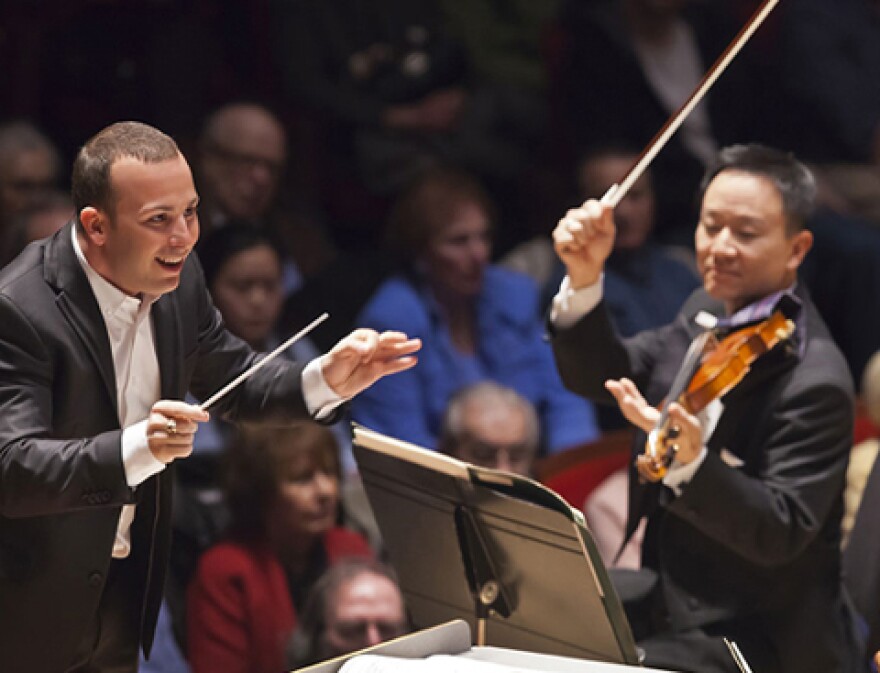Today, orchestra audiences know the concertmaster as the violinist who precedes the conductor onstage, and helps the orchestra tune – a sign that the concert is about to begin. WRTI’s Susan Lewis discovered that the position carried duties both onstage and off.
LEWIS: The concertmaster is foremost the first chair of the first violins, a section that often carries the melody. Philadelphia Orchestra Concertmaster David Kim says his musical duties include setting bowing patterns for the strings.
KIM: Let me use the slow movement of Mozart’s Eine Kleine Nachtmusic. First I’m going to use a long bow and try to capture as many notes as I can without changing the bow. If I decided, okay, well, I think we need more bow so I’m going to have us change bow - the direction that we change the bow - many times. Then suddenly it will sound like I’m singer. Here’s one that I’m breaking the bow as it were.
LEWIS: There are plenty of nonmusical duties as well. On a typical day, Kim checks in with the conductor before they start rehearsal.
KIM: If it’s Yannick, go in and say hello, anything Maestro, last second, that you need to talk about? If it's a guest conductor, welcome them to town; do they need a restaurant recommendation? Do they need to know where to buy concert socks? Just anything, please depend on their concertmaster.
LEWIS: Kim serves as liason between the conductor and members of the Orchestra. He makes public appearances on behalf of the Orchestra, and the music director, if he is not available.


